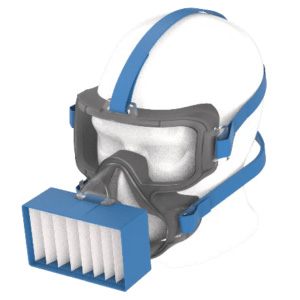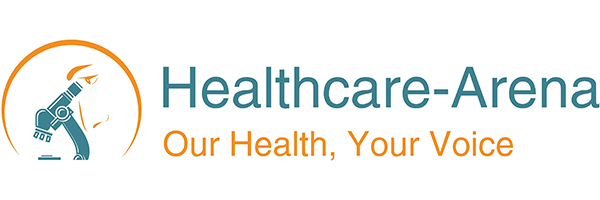Full Face Protection: A simple solution
Article 2 of a 2 part series on the NHS. Co-authored by Deborah Glover

Share this article:
Abstract
In the last article1 some of the challenges related to the acquisition and use of personal protective equipment (PPE) against the Covid-19 virus were raised. In response to some of the issues, particularly in relation to face and eye protection, the Government have asked industry to make essential PPE that meets certain technical specifications. This has provided an opportunity for novel products to be evaluated. In this article, one such product, the Virimask eye and face protection unit, will be presented and discussed.
Introduction
The images of personal protective equipment-induced pressure lines on the faces of health care workers are hard to comprehend. Sadly, the design of the equipment which is meant to protect can cause harm.
Coronavirus disease (Covid-19) virus is transmitted primarily through:
- transfer of respiratory droplets carrying infectious pathogens to mucosal surfaces of a recipient, by sneezing, coughing or speaking
- fomite – an object such as surfaces, inanimate objects, mobile phones, contaminated with infected organisms and which transmits them to another person
Thus, appropriate protective equipment is required to protect health care professionals from potential infection.
Current PPE challenges
Guidance on the use of PPE has been provided by Public Health England.2 However, there have been difficulties in availability and fit of PPE; for example, not all brands of filtering facepiece 3 (FFP3) masks fit in the same way2 and in order to meet Health and Safety Executive regulations, each mask requires fit testing, which can take up to an hour each time.3 In addition, Public Health England guidance states that both FFP3 and fluid-resistant (Type IIR) surgical masks (FRSM) facial masks are for single use or single session use. This places a burden on both supply and cost.4
As the virus can also be transmitted via the conjunctival epithelium5 and eye protection is associated with lower risk of infection6, well-fitted eye and face protection is required against eye from respiratory droplets, aerosols from aerosol generating procedures (AGPs) and from splashing of secretions (including respiratory secretions).4
Such protection is provided by single-use:
- a surgical mask with integrated visor
- a full face shield or visor
- polycarbonate safety spectacles or equivalent
The technical specifications for face protection are outlined in table 1. Both FFP3 and FFP2 face masks should:7
- conform to BS EN 149:2001+A1:2009 standards
- cover the nose and mouth and the chin
- may have inhalation and/or exhalation valve(s)
- entirely or substantially comprise filter material
- be packaged in such a way that they are protected against mechanical damage and contamination before use
- subject to quality management systems such as evidence of compliance to ISO 9001 or BS EN 13485
Face shields or visors are worn on the head to cover the whole of the face and must:
- be optically clear
- be resistant to fogging
- have an adjustable head band
- be resistant to droplets and splashes
Eye shields and safety glasses have the same requirements. In addition, Public Health England guidance states that ‘it is important that the eye protection maintains its fit, function and remains tolerable for the user. Eye and face protection should be discarded and replaced and not be subject to continued use if damaged, soiled (for example, with secretions, body fluids) or uncomfortable’.4 However, re-usable eye and face protection can be used if it is decontaminated between single or single sessional use, according to the manufacturer’s instructions or local infection control policy.4,8
ViriMASK™ – a safe and effective environmentally friendly alternative to full-face PPE
The ViriMASK is strapped around the head; it covers the eyes with a see-through visor and the nose and mouth with protected with a disposable filtering component. The frame is made from elastic biocompatible materials with compliant sections according to the wearer’s face softness and is designed to fit snugly to the skin surface, eliminating pressure lines (figure 1). Made from fully recyclable TPE Virimask™ is a better environmental option than the plethora of plastic based masks and eye protection currently available. The replaceable filter cartridge contains pleated HEPA H14 filters and is sealed to the barrier frame.

The mask can be washed and reused, and although the filters, which come with a safety pouch for storage between uses, must be replaced after 60 hours of use, they can be disposed of safely via the envelope provided. It is designed to last a lifetime with good care, simply wash in soap and water or wipe with alcohol wipes. It provides:
- an effective and safe seal; the mask is completely sealed to outside air penetration
- higher filtration rating; protects against 99.99% particles compared to 95% in N95 mask
- integrated eye protection; prevents infection/contamination through the eye
- exceptional ventilation; the ViriMASK’s breathing area is 5X larger than others, and with its low air flow resistance, breathing is comfortable
- superb personal comfort; minimal skin pressure for extended wear (and minimal pressure marks)
- environmental care; the mask can be washed and disinfected, has easy filter replacement (after 60 uses), and used filters can be stored safely between uses and packaged for safe disposal
- ease of use
Importantly, fitting is more comprehensive than the common one size fits all approach! Initial versions are available in two sizes designed to fit average male and female dimensions.
However, it will be possible in future to simply enter six measurements of the face into a website software sizing option, where an algorithm will calculate the size required for the individual which should even account for diverse ethnic or even disfigured morphological challenges.
There are many masks that include exhalation valves for added comfort. Virimask design omits this addition in the interests of maintaining the highest possible standard of mask integrity. Exhalation valves are not universally accepted for use, 4,9 City and County San Francisco for example.
It is recognised that exhaust valves can be a source of feedback and infection. 4,10 “The exhalation valve is, however, a vulnerable component of a respirator and under actual working conditions may become dirty or damaged to the point of causing significant leakage.”
Conclusion
Some of the challenges related to the acquisition and use of personal protective equipment have been raised in this article. The UK Government have asked industry to make essential PPE providing an opportunity for novel products to be evaluated. The product outlined in this article, the ViriMASK eye and face protection unit, is effective for the care of Covid-19 pandemic; however, as pathogenic threats are a continual threat, the ViriMASK can be stored ready for use in future threats. Interest in the Virimask solution is high not only in healthcare, but care homes, dental, and security staff. Other areas for consideration include transport, logistics and even large scale events management.
If you would like to comment on any of the issues raised by this article, particularly from your own experience or insight, Healthcare-Arena would welcome your views.
References
- Healthcare Arena, June 2020. https://healthcare-arena.co.uk/personal-protection-equipment-provision-challenges-and-solutions/
- Public Health England. Guidance COVID-19 personal protective equipment (PPE). May 2020. Available at: https://www.gov.uk/government/publications/wuhan-novel-coronavirus-infection-prevention-and-control/covid-19-personal-protective-equipment-ppe
- Health and Safety Executive. Fit testing face masks to avoid transmission during the coronavirus outbreak. HSE. 2020. Available at: https://www.hse.gov.uk/news/face-mask-ppe-rpe-coronavirus.htm
- NHS Providers. The Supply of Personal Protective Equipment. NHSP. April 2020. Available at: https://nhsproviders.org/media/689480/nhs-providers-briefing-spotlight-onthe-supply-of-personal-protective-equipment.pdf
- Cheng-wei Lu, Xiu-fen Liu, Zhi-fang Jia. 2019-nCoV transmission through the ocular surface must not be ignored. The Lancet. February 2020. 395;(10224):e39
- Chu DK, Akl E, Duda S, Solo K, et al. Physical distancing, face masks, and eye protection to prevent person-to-person transmission of SARS-CoV-2 and COVID-19: a systematic review and meta-analysis. The Lancet. 2020. DOI:https://doi.org/10.1016/S0140-6736(20)31142-9. Available at: https://www.thelancet.com/journals/lancet/article/PIIS0140-6736(20)31142-9/fulltext#seccestitle10
- HM Government. New High-Volume Manufacturers of COVID-19 Personal Protective Equipment (PPE) and Medical Device PPE. 2020. Available at: https://assets.publishing.service.gov.uk/government/uploads/system/uploads/attachment_data/file/883334/Essential_Technical_Specifications__5_.pdf
- Coia JE, Ritchie L, Makison Booth C, et al. Guidance on the Use of Respiratory and Facial Protection Equipment. J Hosp Infect. 2013 Nov;85(3):170-82. doi: 10.1016/j.jhin.2013.06.020.
- https://sf.gov/information/masks-and-face-coverings-coronavirus-pandemic
- 1990 Oct;51(10):555-60. doi: 10.1080/15298669091370095. Aerosol Penetration Through Respirator Exhalation Valves P Bellin 1 , W C Hinds PMID: 2147535 DOI: 10.1080/15298669091370095 Cite Am Ind Hyg
Table 1: Current face PPE technical specifications (HSE Rapid Evidence Review. HSE. 2020. Available at: https://www.hse.gov.uk/news/assets/docs/face-mask-equivalence-aprons-gown-eye-protection.pdf)
| Requirement | FFP2 (EN149:2001+A1:2009) | FFP3 (EN149:2001+A1:2009) |
|---|---|---|
| Assigned Protection factor (APF) | 10 | 20 |
| Filter efficiency | ≥94%(95 l/min) | ≥99%(95 l/min) |
| Total inward leakage (TIL) | ≤8% | ≤2% |
| Inhalation resistance | ≤240Pa(95 l/min) | ≤300Pa(95 l/min) |
| Exhalation resistance | ≤300Pa(160 l/min) | ≤300Pa(160 l/min) |
| Rebreathed CO2 | ≤1% | ≤1% |











Comments are moderated and may not appear on the site immediately.